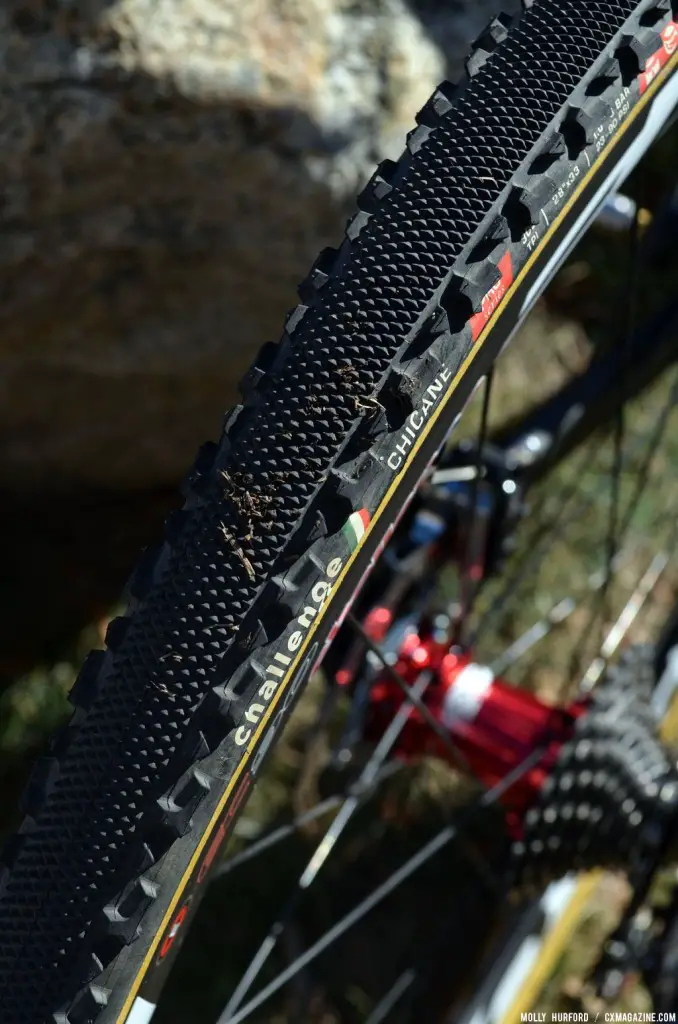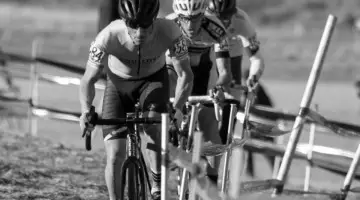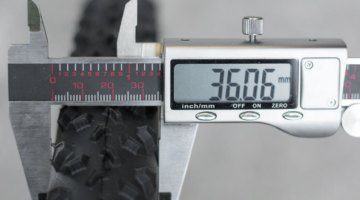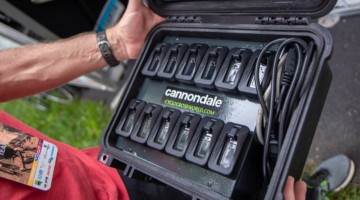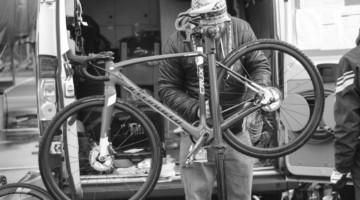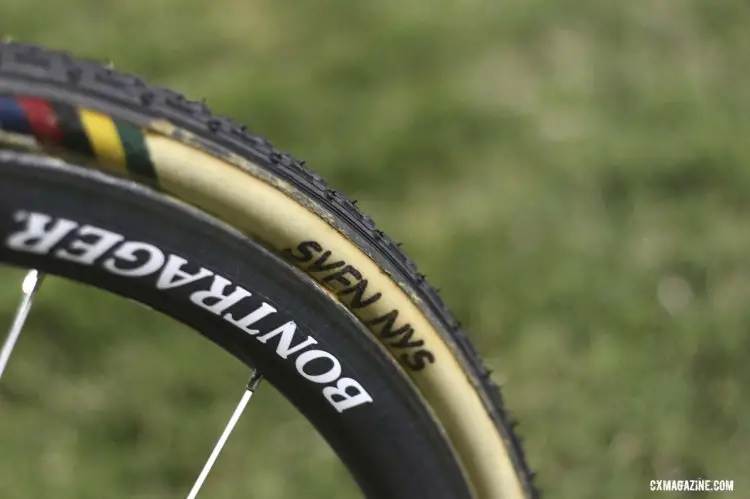
With so many tires and wheelsets to choose from, Sven Nys must make careful selections before a race. Most of us just have to find a do-it-all tread and work with different PSI pressures. © Cyclocross Magazine
Last Tuesday, Adam Myerson explained the process for a good fit, and how it helps a cyclocross technique. Tomorrow, we have another special guest Pro Cyclocrosser ready to prepare you for the season ahead, and so we are treated with a double dose of elite advice. Taking over today’s Mechanical Monday, Adam Myerson looks at tire and rim selection for the conditions of the cyclocross course. Later, in part two, he gives some advice on pressure choice.
[Editor’s Note and update: as Myerson mentions at the end of the article, he is a little Challenge Tire focused as that is his current sponsor. We also have a more general look at treads, as well as a full link to our tire reviews.]
You can find other training ideas and articles at cycle-smart.com, as well as information on internationally-recognized coaching and clinic programs for all skill levels.
by Adam Myerson
In my last article, I introduced the idea of how difficult it used to be to find reliable information about cyclocross, and how the mysterious cult of ’cross was hard to infiltrate. There’s a lot of folklore out there, and a lot of old-school knowledge that not everyone wanted to share. If you’ve got a seat post in your garage that you drilled a hole in for a brake cable to pass through, or if you’ve ever glued tire tread to the bottom of a pair of road shoes, then you’re one of those old-school insiders.
For me, part of becoming a coach and wanting to promote and grow the sport meant that I’ve always wanted to share that information, rather than hoard it.
Wheels, tires, and tire pressure have always been a topic of never ending conversation and debate. I would imagine that only motocross racers stress about it the same way as ’crossers. There are so many options: skinny or fat? File or chevron? Clincher or tubular? There is a different tread and width that, according to legend, will work best in each condition. Unless you’ve got an infinite number of wheelsets (and of course, the best riders do), you can’t really have a tire set up for each condition you might encounter. The first step for most people is to have a standard set up that covers most of your bases, especially since it may be your only set of wheels.
Carbon rims have come a long way in terms of durability, and are definitely suitable for ’cross. Still, they do break on impact unlike alloy wheels, and if you’re on rim brakes, don’t stop as well in wet weather. Alloy wheels are heavier, but less likely to fail, and sometimes repairable if you dent them, whereas carbon will instead break completely and need to be replaced.
Alloy certainly makes sense for training, and carbon for racing, but again, it depends on if you value durability or performance, and what your budget is. Still, even though I have an arsenal of wheels to choose from personally, I glue my mud tires to alloy rims, and everything else to carbon. In the mud I’m more likely to be at very low pressure and risking bottoming out and breaking a wheel, and prefer the better braking of the alloy rims.
As for rim depth, I value weight and durability over aerodynamics, so a low profile rim in the mid 30 mm range is ideal for most people. Rims have also gotten much wider in recent years, and a 25 mm wide rim of any kind will mate with a wide ‘cross tire better and provide improved performance in all categories.
Before the UCI institued the 33 maximum tire width rule, elite rides not only had to worry about bringing multiple treads, but also multiple width tires to races. When I started in the late 80s, we all rode 28 mm wide Grifo/chevron-style tires pumped up to 40-60 PSI. With tires that narrow you relied on the tread for traction, not the casing, and ran higher pressure in the mud to try and cut down to the bottom and find solid ground.
As wider tires became available, the style changed. Bigger volume tires meant you could run lower pressure and get traction and shock absorption. If a course was frozen or sandy, you’d want the widest tires you could fit through your frame, usually 34-35 mm. For fast, smooth courses, people continued to use 28, 30, or 32 mm tires at higher pressures. Casings materials got better, thread counts went up, tires became more supple, and eventually a maximum of 33 mm was set. As a result, you rarely see a rider on anything narrower, and the focus has turned to tread choice, casing suppleness, and pressure variability.
With tread patterns, there are some general rules. We’ve come a long way from files, dots, and chevrons as our only options. These days, it’s good to think in terms of terrain, and the right tread for each condition. Fast, hard pack courses that don’t require much pedaling or turning traction call for a file tread like the Grifo XS (which now exists as the Almanzo in their gravel line) which has a diamond-shaped tread, is a very round, and has very low side knobs. Contrast that with the Chicane, which has very tall, aggressive side knobs, which work well where you have soft turns that require traction and will allow the tall knobs to dig in.
They are both file treads, but they do different things in different conditions. That same Grifo XS is also the tire you’d use in icy conditions, for the same reason. The traction comes from low pressure and a big contact patch, not from tall knobs that won’t sink in and actually give you less traction on hard surfaces.
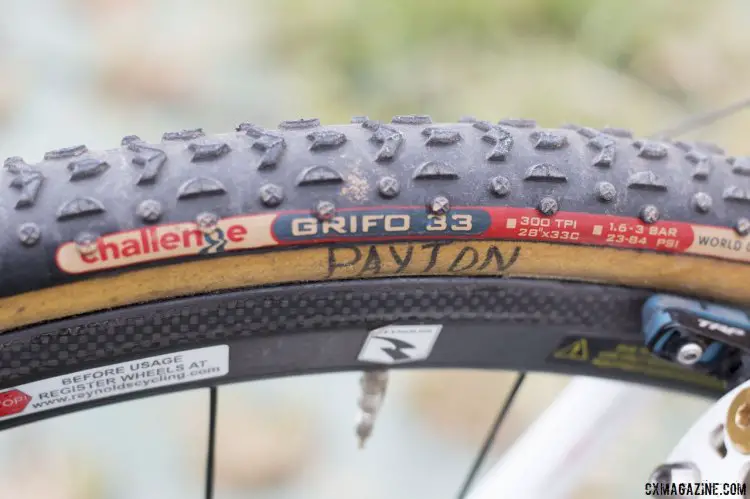
Challenge Grifo 33mm tires are the widest available under UCI regulations, and a good tread choice for the dry gritty dirt of the course in China © Cyclocross Magazine
In muddy conditions, I decide if I’m going to go to full mud tires based on whether the mud has a bottom or not. If it’s still hard packed ground but just with a slippery layer on top, I’ll stick with a fast, all-conditions type tread like the traditional Grifo, chevron style. If the mud has no bottom and I’m really going to rely on the tread to serve as paddles giving me both pedaling and braking traction when needed, that’s when I’ll got to a full mud tire like the Limus. The Baby Limus is a great step between these two options as well. It’s a fast rolling tire that has a little less pedaling traction compared to a full mud tire, but the same amount of turning traction and side knobs.
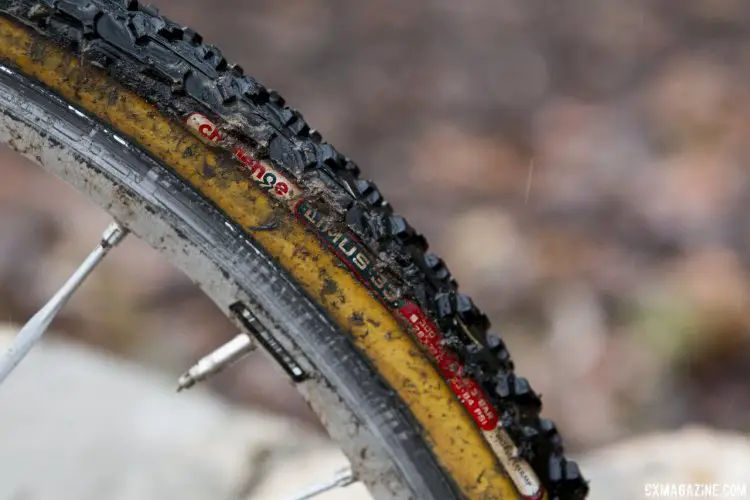
Challenge Limus 33 tires were a popular choice when Nationals in Austin got muddy. © Cyclocross Magazine
Of course, most courses are not all of one type of terrain, and that’s where an all-conditions tire like the Grifo is invaluable. If you only have one set of wheels to race on, this is the tread you want. It may not be the best at anything, but it always works, not matter what the course is like. I’ve used Challenge treads as my examples here as they’re my current sponsor and I’m most familiar with their patterns and names, but of course, simply use those tread patterns as examples when you’re choosing the tire and brand you want.
Stay tuned to part two on tire selection and pressure choices.













